I started training with Hamamoto Sensei in November 2010 and continued until March 2012. That is, I trained with him while living on Okinawa. For periods it was daily training, sometimes less when I got too busy otherwise. Often Tajima Senpai and Tomita Sensei would join the morning training, but often I was the only one.
During that time, I participated in the monthly battokai or “cutting day” about 13 times. It even took place on December 24th, which is Christmas day in Germany. It wasn’t difficult to chose between these two old traditions.
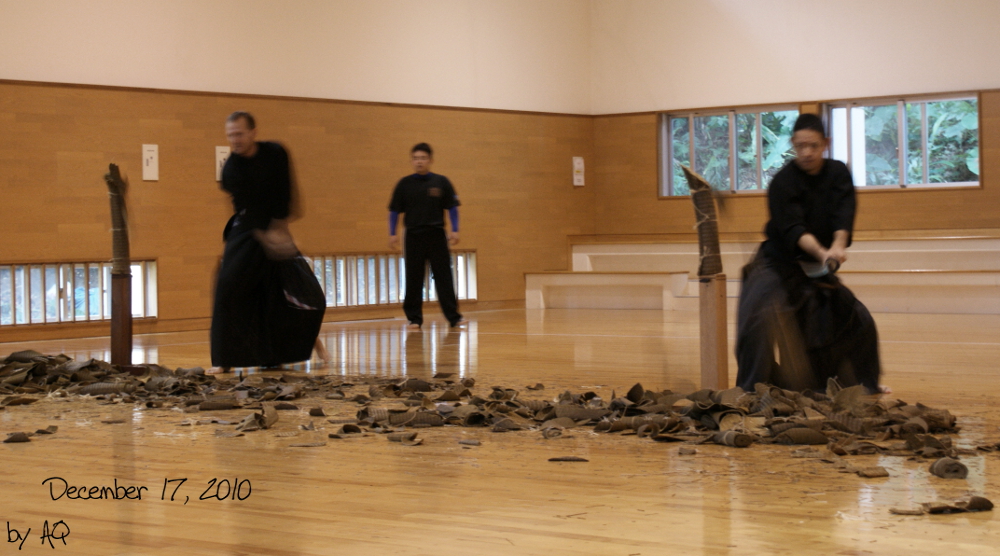
With Tomita Sensei at Hamamoto Sensei’s cutting day (battokai), December 17, 2010, at Koza Budokan.
It’s a huge festival with many Budoka participating. It starts with bringing the Tameshiwari, swords and equipment to the Budokan, get it off the truck and out of the car and place it very orderly into the Rensei Dojo 1st floor of the Okinawa Prefectural Budokan. This takes about an hour depending on how many people are active in helping.
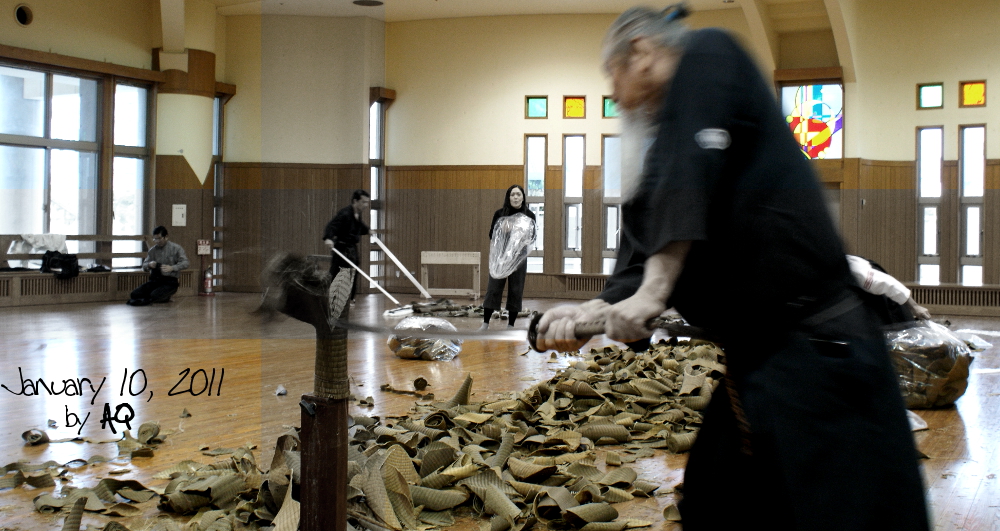
Hamamoto Sensei’s cutting day (battokai), January 10, 2011, at Okinawa Prefectural Budokan.
The battokai starts: everybody does the eleven suburi or wooden sword techniques about 30 to 50 times, some of them left and right.
Then the cutting starts. It takes about two hours.
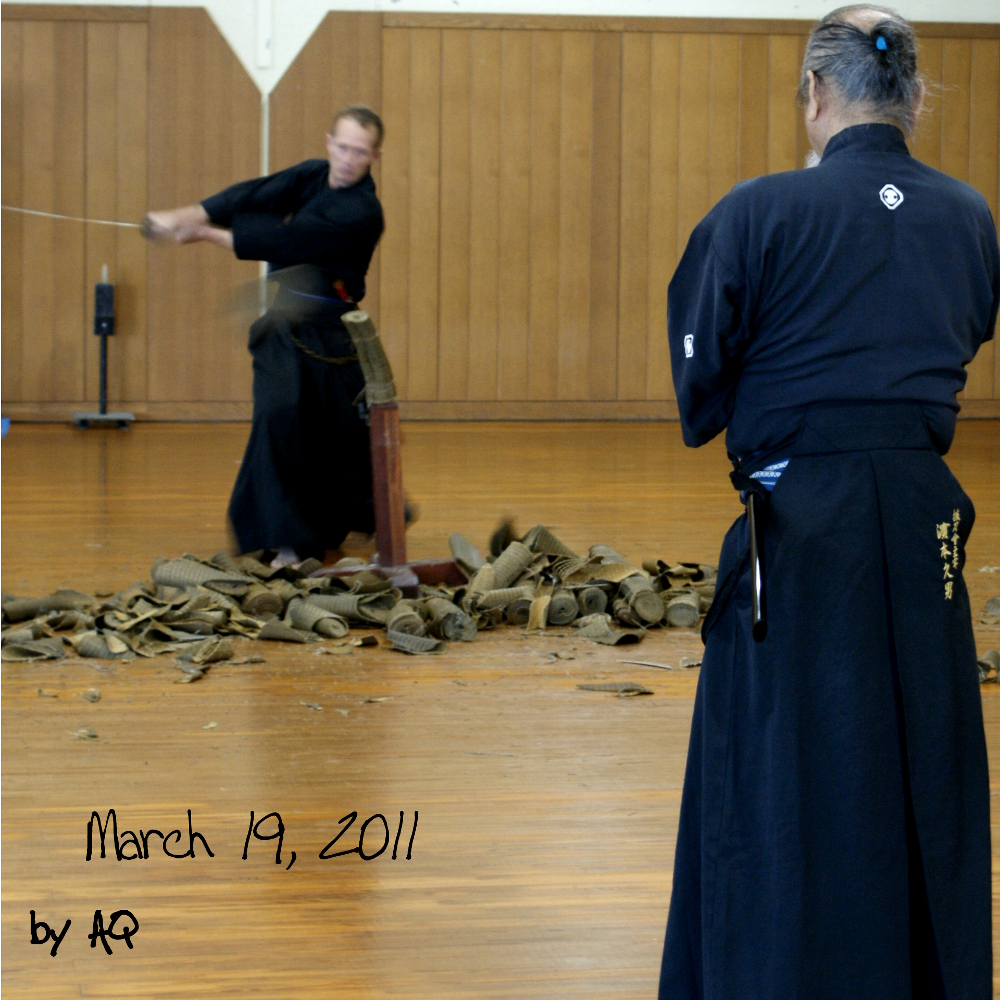
Hamamoto Sensei’s cutting day (battokai), March 19, 2011, at Okinawa Prefectural Budokan.
Afterwards everyone helps cleaning up the floor until even the tiniest tatami snippet is cleared and everything shines again. All equipment, swords are cleaned. The cut material is brought to the truck and everything stowed back in the cars.
It is a very instructive event, with Hamamoto Sensei and other sensei correcting, showing, and giving tips. In this way, the techniques from the kata are verified but there is also free cutting with various levels of difficulty. Sensei would give tasks, saying “cut it like this” or “cut it like that”.
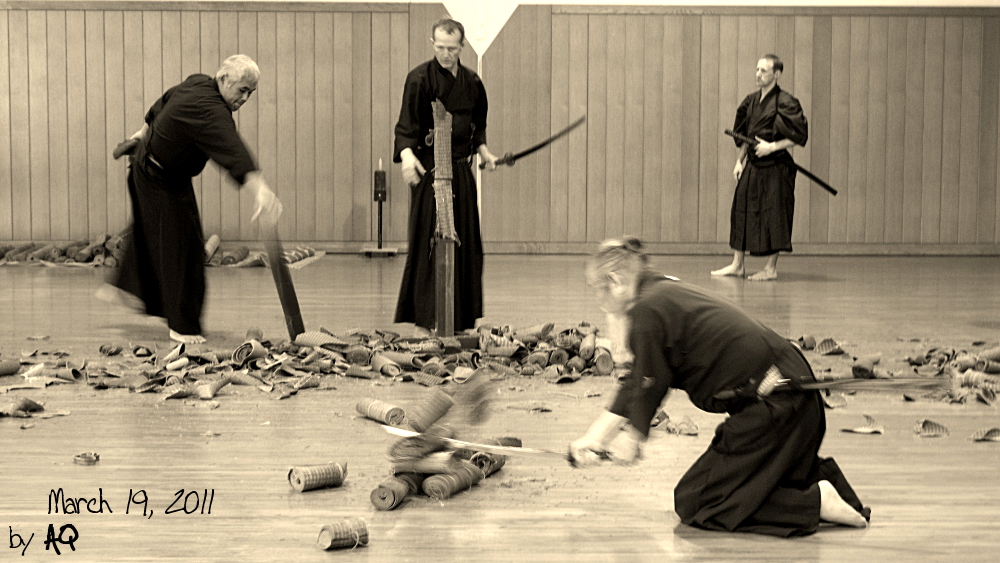
Hamamoto Sensei’s cutting day (battokai), March 19, 2011, at Okinawa Prefectural Budokan.
I made photos from some of the battokai, but sometimes I forgot to bring my camera. Anyway, I hope you like the photos. When you’re on Okinawa, you can ask Hamamoto Sensei to partcipate in the battokai. It is recommended for every serious budoka.
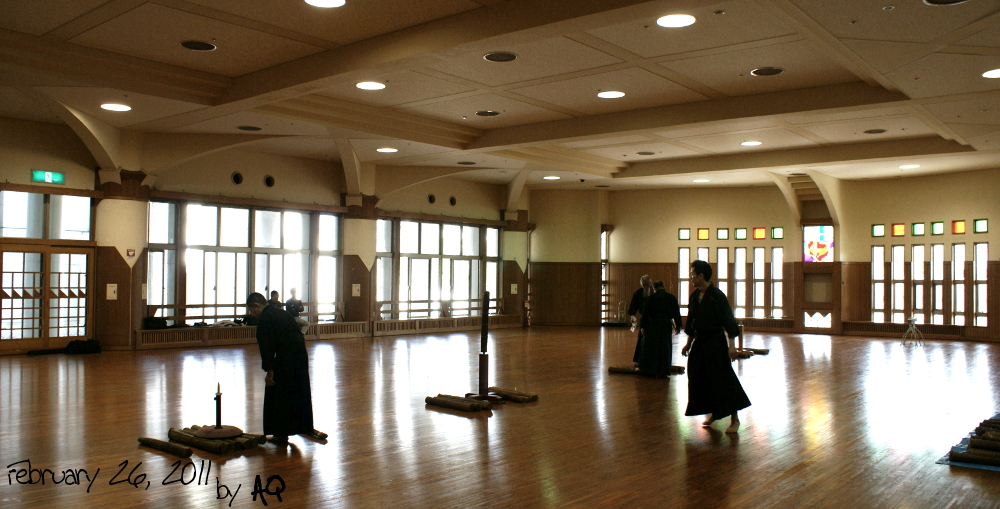
Hamamoto Sensei’s cutting day (battokai), February 26, 2011, at Okinawa Prefectural Budokan.
With the shinken – sharp real swords – one ingredient decisive for defining a budo is apparent: danger. This should only be done under guidance of a seasoned master. I saw swords flying. Actually once had to hop over one coming at me. That was a beginner with no experience. We told him to try again.
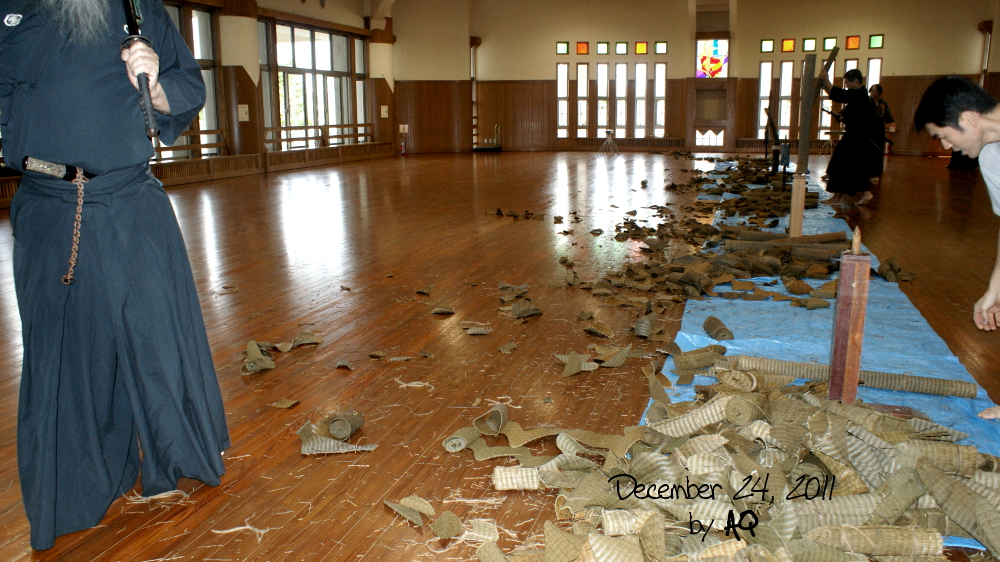
Hamamoto Sensei’s cutting day (battokai), December 24, 2011, at Okinawa Prefectural Budokan.
For the dates of the battokai, look for the Budokan schedule outside the main building and “Battokai” in there. Or ask at the reception, they will help you.
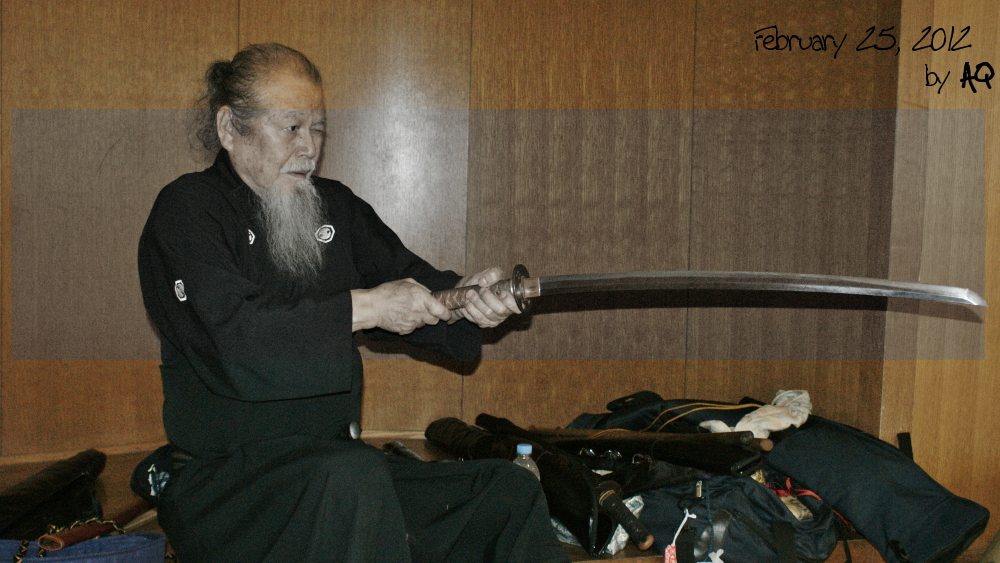
Hamamoto Sensei straightenings swords after cutting day (battokai), February 25, 2012, at Okinawa Prefectural Budokan.
© 2015, Andreas Quast. All rights reserved.
